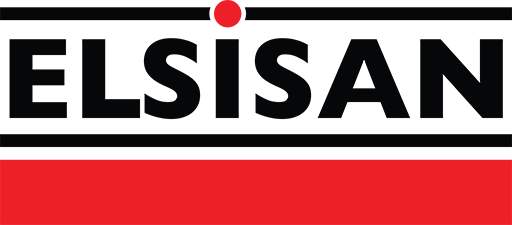Industrial Glass Painting Technologies
In the glass industry, which is gaining momentum today, serial painting of bottles and glasses is done by fully automatic machines. Products such as glass bottles, glasses, souvenirs, glassware are painted with two types of paint, organic and inorganic. Organic paints are water-based or solvent-based double components. Paint application; can be made by air injection, roll printing and silk screen print methods. Organic paints can be dry by air drying, oven drying and UV drying. After drying, the paint forms a hard film.
Inorganic paints are water-based or solvent-based, single component. Matte coating process can also be applied as frosting. The glass is mattified with the matting frosting application and a frosted appearance is provided on the surface. Paint application; can be made by air spray, roll printing and silk screen print methods. Inorganic paints are dried at ovening temperatures starting from 550°C. The paint becomes a complete whole with the glass after ovening process.
Air Spray Paint Application
Glass products to be painted are loaded from the loading area to the conveyor flowing at the adjusted speed by the operator or the robot. The glass first goes through the flaming process to abrade its surface. In the flaming process, the glass surface is exposed to thermal oxidation for less than one second with the flame formed by using gases such as methane, propane, butane. With the flaming process, the ability of the paint to adhere to the surface is increased. In the continuation of the coating process, the product passes in front of the antistatic cleaning unit in order to remove the static tension on the surface. The surface is statically cleaned and ready for paint.
Painting can be done with a conventional air gun, bell gun or disc system in accordance with the capacity and the shape of the glass piece. With conventional air guns, many different colors can be applied at the same time in cases where quality expectations are not high.
Thus, the inventory cost is reduced and the packaging time is shortened. In mass productions with high capacity, thanks to the 80-90% transfer efficiency with the Bell gun and disc system, despite the increase in paint prices, economy in paint consumption is ensured. Bell and Disk systems provide excellent paint uniformity and quality. Extremely low overspray reduces cabin exhaust flow and reduces cleaning requirements.
Cabin where paint applications are made; It can be produced in two different types with water screen or dry filter. Today, dry filter technology has progressed positively and has become more preferred.
Paint application is made in a positive pressure room. With the help of positive pressure booth, the paint application is isolated from the external environment and dust entry into the cabin is prevented. In all painting systems, the glass is rotated around its axis during painting. Paint-applied products enter the flash-off section. Resting before the oven is done by staying in the flashoff for about 10 minutes.
Paint drying oven can be made with conventional or infrared. In infrared ovens, the oven time is shortened by 1/3. For example, the curing time, which is 20-25 minutes in conventional conventional ovens, decreases to 6-8 minutes. Fans are used for heat distribution in conventional furnaces. With the fan circulation, dust flying in the fan also occurs. Since there is no air circulation in the infrared oven, the paint is cured in a dust-free environment.
Glass products coming out of the oven enter the cooling section and cool down to the touch temperature. Glass products after the cooling section; arrives at the unloading station. It is emptied and packaged by the operator or the robot or transferred to the high temperature furnace.
Glass Painting Technologies In Industry 4.0
Glass painting machines are machines suitable for the new industrial revolution defined as Digital Industry, 4th Industrial Revolution or Industry 4.0, with loading and unloading done by robots.
Conveyor and loading and unloading robots communicate and move synchronously through sensors communicating with each other in the glass painting machine. All of the glass painting machines are PLC and computer controlled. A separate recipe can be created for each product. Important values such as how many glass products are painted per hour, paint consumption, energy consumption, thermal energy consumption, stopping and working times can be recorded and reported. In addition, the user is warned with fault alarms and maintenance alarms depending on the anticipated maintenance period.
With the help of remote access, PLC system can be intervened and data can be received from the office or from a different country. Fully automatic glass painting machines can work completely unmanned with its developing technology, thus providing speed, economy, efficiency and quality. With the increase in efficiency and quality, the global market share of glass products can be increased significantly.
To get an detailed information about industrial glass painting, please visit product page from the link below
https://elsisan.com/tr/endustriler/cam-sektoru
Canay IŞIKMAN
Project Engineer
Project Department
Elsisan A.Ş

 TR
TR EN
EN